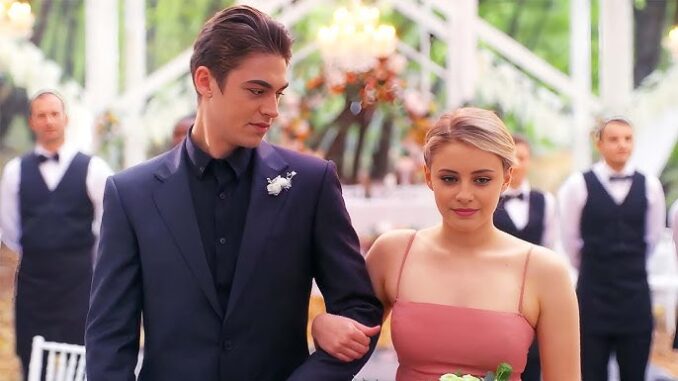
The After series, born from Anna Todd's fanfiction and blossoming into a publishing phenomenon, captivated millions with its tempestuous romance between Tessa Young and Hardin Scott. The cinematic adaptations, while popular, have always walked a tightrope, attempting to distill the intricate, often messy, character arcs and sprawling narrative into digestible film segments. However, with After Everything, the fifth installment, the cinematic universe takes a significant and deliberate detour, charting its own course and diverging dramatically from the novels, particularly After Ever Happy and the companion novel Before. This divergence isn't merely cosmetic; it reshapes the core narrative, the characters' individual journeys, and ultimately, the very essence of their resolution.
The most glaring and foundational divergence lies in the central conflict and Hardin's primary arc. In the books, following the emotionally shattering events of After Ever Happy, Hardin and Tessa navigate a prolonged, agonizing separation. Hardin grapples with his past, his trauma, and the consequences of his actions, often in solitude or with the distant, yet ever-present, specter of Tessa influencing his every move. His journey of self-improvement is gradual, punctuated by relapses and a deep, internal struggle to become worthy of love. The focus remains heavily on their on-again, off-again dynamic and the painful growth that must occur before their eventual, mature reconciliation, which spans years and is detailed in the extensive epilogue of After Ever Happy and the prequel Before.
After Everything, however, concocts an entirely new, self-contained narrative scaffolding for Hardin's healing. The film opens with Hardin in a deep, creative paralysis, haunted by the publication of his bombshell memoir and the subsequent ghosting from Tessa. His editor's ultimatum — write a sequel or face professional ruin — propels him on an unexpected pilgrimage to Portugal. The explicit goal? To seek out Natalie, a figure from his dark past, to apologize and find some semblance of peace. This quest for Natalie, a character who exists in the books primarily as a brief, almost off-screen mention of a past encounter, becomes the driving force of the entire film. She is transformed from a fleeting regret into a pivotal catalyst for Hardin’s atonement and self-discovery.
This manufactured plot device fundamentally alters the nature of Hardin's growth. In the books, his healing is largely an introspective, often solitary battle against his own demons, occasionally aided by friends or family, but primarily driven by his desperate desire to be a better man for Tessa. In the film, his journey is externalized, given a tangible mission with a clear objective. Meeting Natalie, receiving her forgiveness, and confronting the ghosts of his past are presented as the crucial steps for him to unlock his creative block and, implicitly, to become worthy of Tessa's return. It provides a more cinematic, action-oriented arc, but it strips away some of the raw, internal struggle that defines his literary counterpart.
Consequently, Tessa's role in After Everything is significantly diminished. In the novels, even during their separations, Tessa remains Hardin's north star, the reason for his every effort towards change. Their paths, though separate, are constantly intertwined by letters, shared memories, and their undeniable connection. The books illustrate their growth together, even when apart. The film, conversely, places Tessa as an almost mythical figure, present only through voice-overs of her letters and as the ultimate prize for Hardin's successful transformation. She is less a partner in his healing and more a distant, inspiring muse. This creative choice makes Hardin's journey feel more independent and self-driven, but it dilutes the very essence of their co-dependent, yet ultimately evolving, relationship that defined the series.
Furthermore, the compressed timeline and reordering of events in After Everything reshape the narrative's emotional landscape. Elements like Landon's wedding, which in the books serves as a backdrop to their much later, mature reunion, are brought forward and interwoven into Hardin's current struggles. The nuanced, years-long journey of Tessa and Hardin finding their way back to each other, complete with career changes, personal milestones, and a more gradual maturation, is streamlined into a more immediate, direct path. The rich, detailed epilogues of the books, which offer glimpses into their future, careers, and family life, are forgone in favor of a more ambiguous, yet hopeful, immediate reconciliation.
Ultimately, After Everything stands as a testament to the challenges of adapting beloved literary works. Faced with the daunting task of concluding a sprawling saga within the confines of a single film, the creators made bold choices, crafting a new narrative that prioritizes Hardin's individual quest for redemption. While it sacrifices the intricate psychological depth and the raw, unvarnished messiness of the book's separation and healing process, it delivers a more focused, cinematic arc. The film offers a definitive, albeit divergent, closure to Hardin's journey, presenting a version of events where his self-forgiveness and independent growth pave the way for a more earned and emotionally resonant reunion with Tessa, even if it’s a journey distinctly different from the one Anna Todd originally penned.
